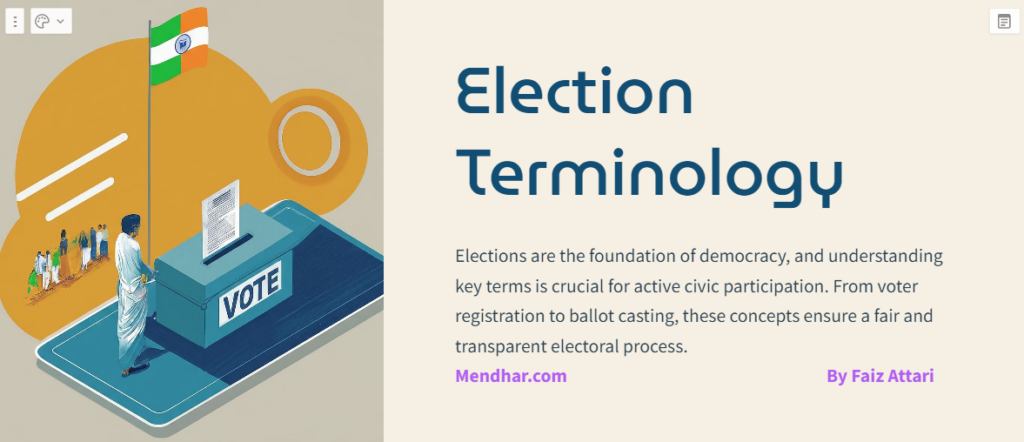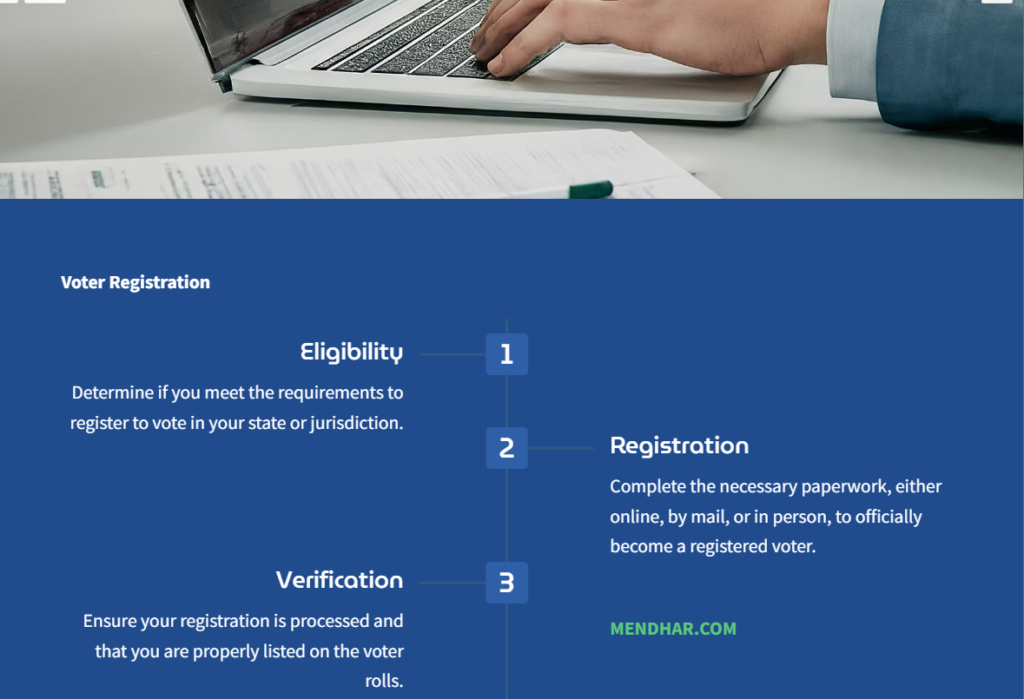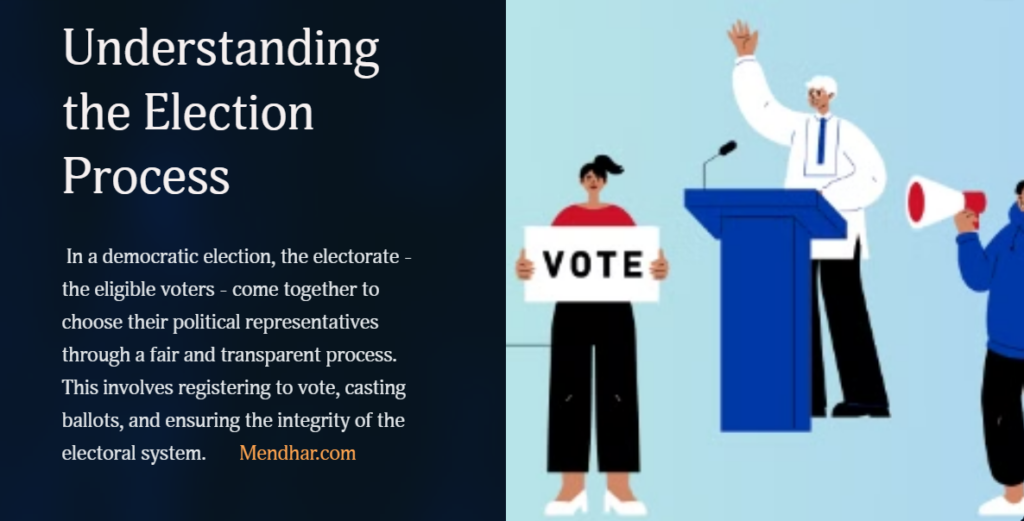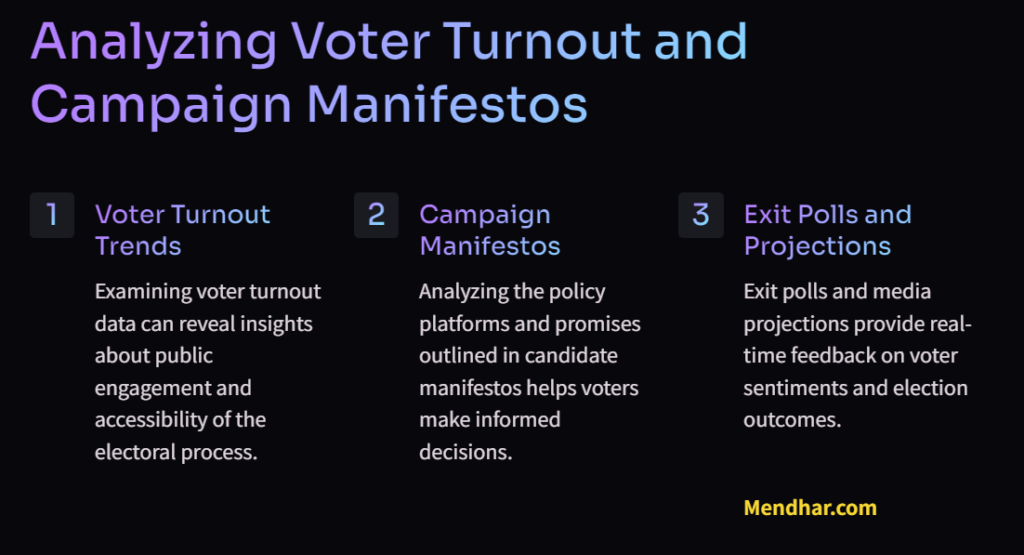Decoding Democracy: Essential Election Terminology

In the digital age of democracy, comprehending election terminology is akin to wielding a compass in the vast landscape of civic engagement. As Electronic Voting Machines (EVMs) increasingly become the cornerstone of modern elections, grasping these terms is pivotal for voters navigating the electoral terrain. Let’s embark on a journey to demystify the fundamental vocabulary associated with elections, elucidating their significance within the realm of EVM usage.
Electorate: The cornerstone of democracy, the electorate encompasses all eligible voters within a specific jurisdiction. Whether in a national election or a local referendum, the electorate embodies the collective voice of the populace, shaping the course of governance.
Candidate: The aspirants vying for public office, candidates embody the diverse voices and visions within a democratic society. On an EVM interface, candidates are presented alongside their respective symbols or names, offering voters a spectrum of choices.
Campaign: The orchestrated efforts by candidates and political parties to sway public opinion and garner support. Through multimedia campaigns compatible with EVMs, candidates disseminate their messages, engaging with voters on issues that resonate with them.
Polling Station: The nerve center of the electoral process, a polling station serves as the conduit for voter participation. Equipped with EVMs, each polling station provides a secure and accessible venue for citizens to exercise their franchise.
Ballot: The quintessential instrument of democracy, the ballot presents voters with a roster of candidates or options for selection. On an EVM screen, the digital ballot displays candidates’ names and symbols, facilitating informed decision-making.

6.Voter Registration: The foundational step towards electoral participation, voter registration ensures that eligible individuals are enlisted on the electoral roll. Through this process, voters are assigned unique identifiers, enabling seamless interaction with EVMs during elections.
7.Electoral Roll: The comprehensive roster of registered voters within a constituency, the electoral roll forms the bedrock of the electoral process. EVMs cross-reference voters against the electoral roll, verifying their eligibility before granting access to ballot casting.
8.Ballot Paper: In the realm of EVMs, the digital representation of the traditional ballot, accessible through the machine’s interface. Voters navigate the ballot paper on the EVM screen, selecting their preferred candidates with ease and precision.
9.Voting Booth: A sanctuary of democracy within the polling station, the voting booth offers voters privacy and autonomy in exercising their electoral rights. Within this secluded space, voters interact with EVMs, casting their votes without external influence or coercion.
10.Polling Officer: The custodian of electoral integrity, the polling officer oversees voting procedures at the polling station. Trained to operate EVMs proficiently, polling officers ensure the smooth conduct of elections, upholding the sanctity of the democratic process.

11.Electoral Commission: The guardian of electoral fairness and transparency, the Electoral Commission is tasked with organizing and supervising elections. Through meticulous oversight, the Electoral Commission ensures the seamless integration of EVMs into the electoral framework, fostering public trust in the electoral process.
12.Constituency: The geographic domain represented by an elected official, the constituency serves as the locus of democratic representation. EVMs are deployed across various constituencies, enabling voters to elect their representatives with precision and efficiency.
13.Manifesto: The compass guiding political action, a manifesto outlines a party’s policies and commitments to the electorate. Informed by manifestos, voters navigate EVMs, aligning their choices with the values and aspirations espoused by political parties.
14.Exit Poll: A barometer of electoral sentiment, exit polls capture voters’ preferences as they exit polling stations. By analyzing EVM data, exit polls provide insights into electoral trends, offering a glimpse into potential electoral outcomes.
15.Vote Counting: The culmination of the electoral process, vote counting determines the victors of an election. EVMs streamline the vote counting process, expediting the tabulation of votes and ensuring the expeditious announcement of results.

16.Majority: The threshold for electoral victory, the majority signifies the support garnered by a candidate or party. EVMs compute and display the aggregate votes cast for each candidate, elucidating the emergence of a majority winner.
17.Coalition: The synergy of political forces, coalitions unite parties to pursue common goals. EVM results play a pivotal role in coalition building, signaling the distribution of electoral mandates and shaping post-election alliances.
18.Runoff Election: The recourse to electoral resolution when no candidate secures a clear majority. EVMs facilitate runoff elections, enabling voters to participate in subsequent rounds of voting to elect their representatives decisively.
19.Spoiled Ballot: A testament to electoral mishaps, a spoiled ballot is invalidated due to errors or irregularities. Through user-friendly interfaces, EVMs minimize the incidence of spoiled ballots, ensuring the integrity of the electoral process.
20.Electoral Fraud: The antithesis of democratic principles, electoral fraud undermines the sanctity of elections. EVMs incorporate robust security features to thwart electoral fraud, safeguarding the integrity and credibility of electoral outcomes.

Frequently Asked Questions : Essential Election Terminology
1. What is the electorate?
The electorate refers to the body of eligible voters within a specific jurisdiction. It encompasses individuals who have the right to participate in elections and influence the democratic process by casting their votes.
2. Who is a candidate?
A candidate is an individual who seeks election to a public office. Candidates present their platforms and seek support from voters to secure elected positions.
3. What is a campaign?
A campaign is an organized effort by candidates or political parties to promote their candidacy or agenda. It involves various activities such as rallies, advertisements, and outreach programs to engage with voters.
4. What is a polling station?
A polling station is a designated location where voters go to cast their ballots during elections. It is equipped with Electronic Voting Machines (EVMs) to facilitate the voting process.
5. What is a ballot?
A ballot is a list of candidates or options presented to voters for selection. On an EVM, the ballot is displayed electronically, allowing voters to make their choices by pressing buttons corresponding to their preferred candidates.
6. How does voter registration work?
Voter registration is the process by which eligible individuals enroll themselves on the electoral roll to participate in elections. It involves providing personal information and documentation to verify identity and eligibility.
7. What is an electoral roll?
An electoral roll is a comprehensive list of registered voters within a constituency. It serves as the basis for verifying voter eligibility during elections and ensuring that only authorized individuals participate in the voting process.
8. What is a voting booth?
A voting booth is a private enclosure within a polling station where voters cast their votes in secrecy. It provides privacy and confidentiality to voters while they interact with EVMs to make their selections.




WOW just what I was looking for. Came here by searching for best
summer looks https://waste-Ndc.pro/community/profile/tressa79906983/
WOW just what I was looking for. Came here by searching for best summerr looks https://waste-Ndc.pro/community/profile/tressa79906983/